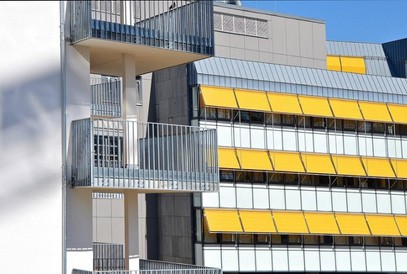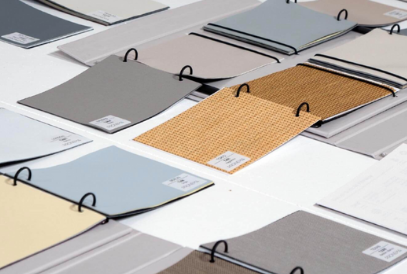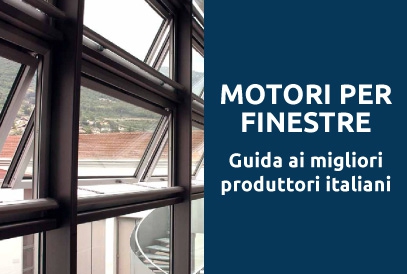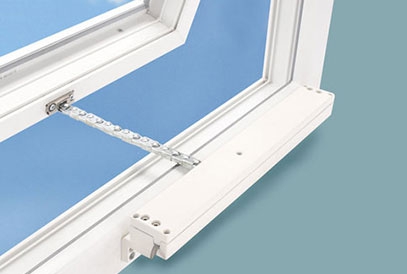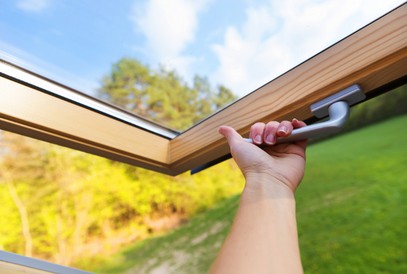How to motorize awnings: read the complete guide from Windowo with lots of practical advice and solutions.
How to motorize awnings with reliable brands? At Windowo we work with renowned
motors for awnings manufacturers such as
Somfy, the Italian specialist company
Almot and the
Nice brand.
In this article I will guide you through all aspects of
awning motorization. You will discover why it is a profitable investment, how to choose the most suitable motor, which sensors to add to optimize operation and how the installation takes place.
We will also explore some specific
curtain solutions available on the market. Read on to learn more!
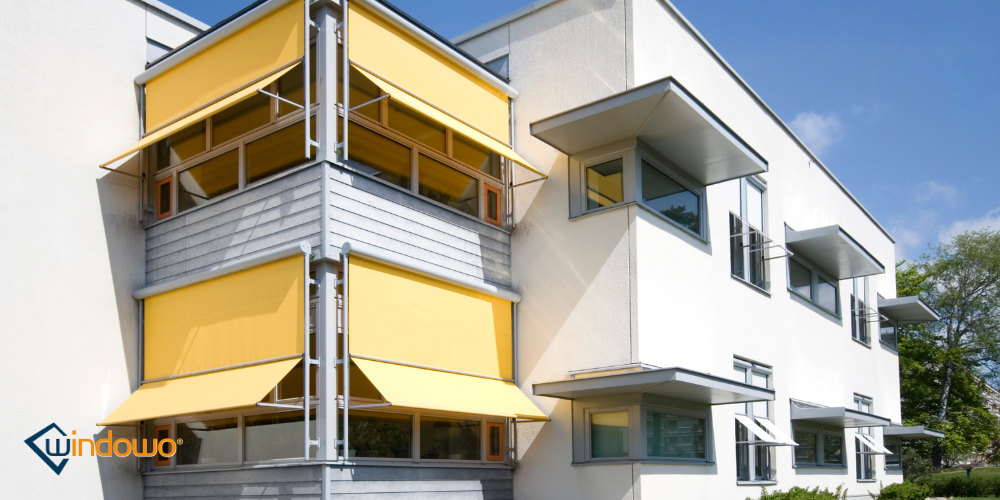
Why automate awnings?
Automating awnings means
transforming a manual operation into a simple and immediate gesture , significantly increasing living comfort. Thanks to motorization, it is possible to control the opening and closing of the awnings with a simple touch on a remote control or via an app on the smartphone, without physical effort and at any time.
Furthermore,
automation allows for the integration of climate sensors that protect the awnings from adverse weather conditions, improving the energy efficiency of the home and prolonging the life of the awnings themselves.
Convenience and ease of use of automatic awnings
With a simple touch of a button, a remote control or even through a smartphone, you can control your blinds without any physical effort. This is especially useful for large blinds or those installed in hard-to-reach places.
Weather protection
Motorized awnings can be integrated with
sensors that automatically react to weather conditions. For example, in case of strong wind or rain, sensors can automatically close the awnings to prevent damage. Likewise, they can open when the sun reaches a certain intensity, ensuring shade and thermal comfort.
Increased security
The ability to
program shades to open and close at specific times or in response to certain weather conditions can also increase the security of your home. Shades can simulate the presence of people in the home, deterring potential intruders.
Energy efficiency
Optimal shading control helps regulate the interior temperature of your home, reducing the need for air conditioning during the summer months. This translates into energy savings and lower utility bills.
Property enhancement
Installing motorized awnings adds a touch of modernity and luxury to your home,
increasing its value on the real estate market.
How to motorize awnings?
Motorization involves installing a tubular motor inside the roller blind. This motor replaces the manual crank and allows for automated control of the blind.
- Removing the manual system : The existing winch and crank are removed.
- Motor installation : The motor is inserted into the winding roller and connected to the electrical supply.
- Control setup : Install a wall button, program a remote control, or set up the app for remote control.
- Addingdetectors and sensors (optional): Install wind, rain and light sensors for automatic operation based on weather conditions.
Types of Awning Motors Available
There are mainly two types of motors available for awnings: the mechanical motor and the radio motor.
Mechanical engine
This type of motor
is activated by a physical button installed on the wall. Its advantages include reliability and ease of use. However, it is important to note that it requires wiring to connect the button, which may involve additional electrical work during installation.
Radio engine
This motor can be
controlled remotely via a remote control or a mobile app . Installation is easier because it only requires power to the motor, without additional wiring for the controls. In addition, it offers advanced features such as time programming and integration with home automation systems, allowing for more sophisticated control of the awning.
As for
compatibility with existing awnings , awnings without a cassette can be motorized without requiring significant structural modifications. In the case of semi-cassette or fully cassette awnings, it may be necessary to adapt the cassette to accommodate the motor, which may involve more complex interventions.
Finally,
obsolete or very old awnings , especially if equipped with non-standard boxes, may not be suitable for motorization, making it necessary to evaluate the purchase of a new awning already set up for automation.
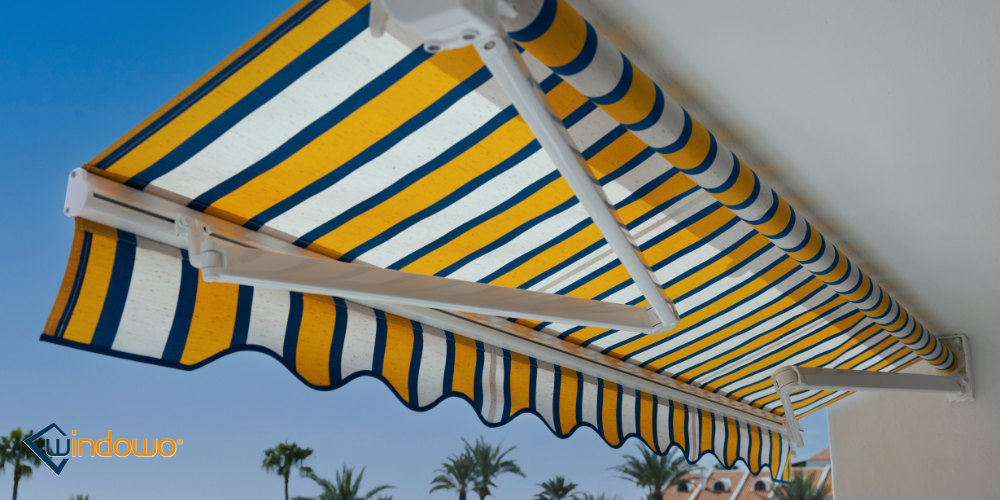 Choosing the right motor for your awning
Choosing the right motor for your awning is essential to ensure its proper functioning and long life. First of all, it is important to make sure that the motor is compatible with the type of awning you have, whether it is an arm awning, awning, roller awning, pergola awning or other. Not all motors are suitable for all types, so this initial check is essential.
The
size and weight of the awning are other crucial factors. The motor must have enough power to move the awning effortlessly; a motor that is too weak may not work properly or wear out quickly. Also, consider the power source: check if there is an electrical point nearby or if you need to opt for alternative solutions such as solar-powered motors.
Also think about the
additional features you might want. For example, if you want to integrate climate sensors or connect the awning to a home automation system, you will need to choose a motor that supports these options. The brand and reliability of the motor are important: opting for recognized brands will guarantee you a longer product life.
When making your choice, pay attention to the
power of the motor, expressed in Newton per meter (Nm) . This should be proportionate to the weight of the fabric and the size of the awning.
If you live in a residential area where noise might be an issue, you might want to consider motors that are designed to
run quietly .
Energy efficiency is another consideration: fuel-efficient motors help reduce your environmental impact and can save you money on your utility bills.
Sensors for optimal control
Adding sensors to your motorized awning can greatly improve its performance and lifespan.
A
wind sensor , also called
an anemometer , detects wind speed and automatically closes the awning if it exceeds a preset threshold. There are models that measure wind speed directly via fans or cups, and others that detect oscillations of the awning structure. This device protects the awning from damage caused by strong winds, increasing safety and prolonging the life of the product.
The
sun sensor for awnings measures the intensity of sunlight and adjusts the opening of the awning accordingly. This helps maintain a cooler interior temperature during the hottest hours, provides thermal comfort and protects furniture and fabrics from fading caused by UV rays. It also reduces the use of air conditioning, helping to save energy.
The
rain sensor for awnings , or rain gauge, detects the presence of rain and automatically closes the awning to prevent damage. It prevents the accumulation of water on the canvas, which could cause sagging or promote the formation of mold, and preserves the mechanical components by avoiding premature wear due to humidity.
Many motors and sensors can be integrated with
smart home systems , allowing centralized control through voice assistants such as Alexa, Google Home or Siri. This allows you to manage the awning in a simple and intuitive way, even remotely, increasing the comfort and energy efficiency of your home.
Carefully choosing the motor and accessories for your awning will allow you to take full advantage of the benefits of automation, improving the quality of life and protecting your investment over time.
How to install motorized awnings?
The installation procedure includes several steps:
- Initial Assessment : A technician examines the existing structure to determine compatibility and any necessary modifications.
- Preparation : Make the work area safe and protect surrounding surfaces.
- Removing manual components : The winch and crank are removed.
- Motor installation : The motor is inserted into the roller and fixed securely.
- Electrical connections : the necessary wiring is carried out, respecting safety regulations.
- Control Setup : Program remotes, buttons and apps to your preferences.
- Final test : the correct functioning of the awning is verified in all control modes.
- User instructions : The technician explains to the user how to use the system and provides maintenance advice.
How much does it cost to automate awnings?
There are several
factors that influence the cost of motorizing awnings.
First, the
type of motor : radio motors are generally more expensive than mechanical motors. Additional features, such as the integration of sensors and home automation systems, can further increase the total cost. The size of the awning also affects the price, as larger awnings require more powerful and therefore more expensive motors. Additionally, the cost of installation varies based on the complexity of the work and the geographic region.
As for an indicative estimate of costs, a mechanical engine starts at around 150 euros, while a radio engine costs from 200 euros and up.
Sensors vary in price : a wind sensor costs around 100 euros, a light sensor around 80 euros and a rain sensor around 120 euros. Professional installation can usually range between 150 and 300 euros.
From an economic point of view, it is important to consider that the
energy savings obtained thanks to motorization can amortize the investment over time. A quality motorized system has a long life, offering an excellent quality-price ratio. Furthermore, it adds value to the property, making it more attractive in the case of sale or rental.
Specific solutions: examples of awning motorization kits
On our site we offer a selection of motorization kits that include everything you need to upgrade your awning.
An example is the
Almot SUN1B Awning Motor Kit , which includes a 40 Nm tubular motor, a vibration sensor and a pre-configured remote control. This kit offers complete and safe automation for your awnings, with quick and easy installation.
Another solution is the
Awning Motorization with Control Unit and Wind Sensor , equipped with the Italian-made WIND ALMOT motor. It is available in different versions to choose from: WIND140MDS-MINI, WIND150MDS-MINI, WIND140MINI or WIND150MINI. You can select the variant that best suits your needs.
Finally, we propose the
Awning Motor with 5-Channel Remote Control . This kit, available in the Almot SUN2B or SUN2BMDS variants, is a complete system for the automation of awnings. It includes a 775W 5-channel remote control and an integrated radio sun-wind sensor.
Motorizing awnings is an investment that offers numerous advantages in terms of comfort, safety and energy efficiency. With the right information, you can transform your outdoor space into an even more pleasant and functional area.


